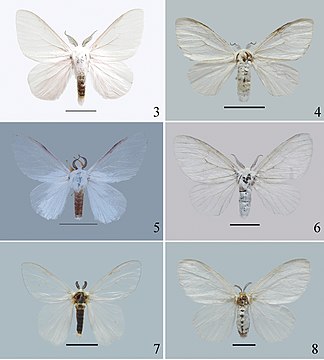| Ivela yini | |
|---|---|
 | |
| Scientific classification | |
| Domain: | Eukaryota |
| Kingdom: | Animalia |
| Phylum: | Arthropoda |
| Class: | Insecta |
| Order: | Lepidoptera |
| Superfamily: | Noctuoidea |
| Family: | Erebidae |
| Genus: | Ivela |
| Species: | I. yini |
| Binomial name | |
| Ivela yini Xie & Wang, 2022 | |
Ivela yini is a species of moth from the genus Ivela . [1] It was originally described by Lin-Zhe Xie and Hou-Shuai Wang in 2022.


